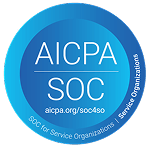FAQs
 Can Pakistani students refinance their student loans?
Can Pakistani students refinance their student loans?
Some lenders offer refinancing options for Pakistani students, especially if they have a solid credit history and a steady income after graduation. Just keep in mind that eligibility requirements vary by lender. For Pakistani students who have started building a credit history in the U.S. or Canada, refinancing can be a good option to secure better rates.
 Are interest rates higher for loans without a cosigner?
Are interest rates higher for loans without a cosigner?
Since lenders take on more risk with no-cosigner loans, the interest rates can be higher for no cosigner options. That said, rates depend on the lender, your academic background and your future earning potential. It’s always smart to compare offers to find the best deal. Pakistani students should weigh the slightly higher rates against the difficulty of finding a qualified cosigner.
 Do I have to start repaying my student loan right away?
Do I have to start repaying my student loan right away?
Repayment terms depend on the lender. Some lenders let you defer payments while you’re in school and for a few months after graduation, but when you defer payments you’ll end up paying more interest over the life of the loan. With MPOWER Financing, you’ll make interest-only payments while you’re in school and for six months after you graduate. This helps you reduce the overall cost of the loan and also helps you build your credit. Be sure to check your loan agreement to know exactly when full repayment starts.
 Can no-cosigner loans cover both tuition and living expenses?
Can no-cosigner loans cover both tuition and living expenses?
Most no-cosigner loans in the U.S. can be used for tuition as well as housing, food, transportation and healthcare. Just double-check with your lender to make sure your loan amount covers everything you need. In Canada, loans typically cover tuition and other university-invoiced expenses. For Pakistani students, it’s important to calculate the total cost of living in your destination city, as expenses can vary widely across different regions of the U.S. and Canada.
 What are MPOWER’s student loan interest rates?
What are MPOWER’s student loan interest rates?
MPOWER loans have a range of interest rates based on your future earning potential, academic history and intended programme of study. Check the website for your eligibility and the latest details and next steps.
